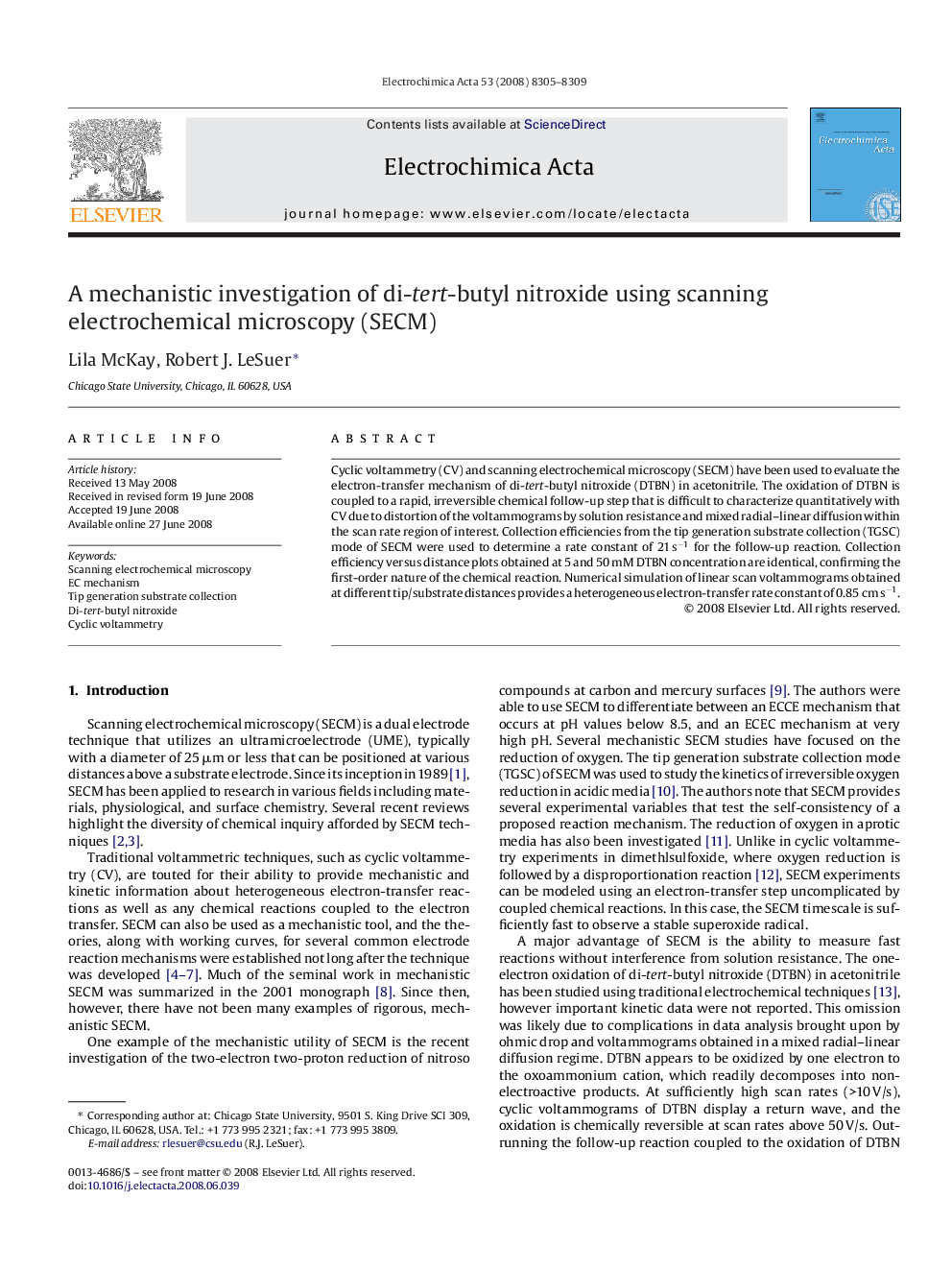| Article ID | Journal | Published Year | Pages | File Type |
|---|---|---|---|---|
| 194405 | Electrochimica Acta | 2008 | 5 Pages |
Cyclic voltammetry (CV) and scanning electrochemical microscopy (SECM) have been used to evaluate the electron-transfer mechanism of di-tert-butyl nitroxide (DTBN) in acetonitrile. The oxidation of DTBN is coupled to a rapid, irreversible chemical follow-up step that is difficult to characterize quantitatively with CV due to distortion of the voltammograms by solution resistance and mixed radial–linear diffusion within the scan rate region of interest. Collection efficiencies from the tip generation substrate collection (TGSC) mode of SECM were used to determine a rate constant of 21 s−1 for the follow-up reaction. Collection efficiency versus distance plots obtained at 5 and 50 mM DTBN concentration are identical, confirming the first-order nature of the chemical reaction. Numerical simulation of linear scan voltammograms obtained at different tip/substrate distances provides a heterogeneous electron-transfer rate constant of 0.85 cm s−1.
